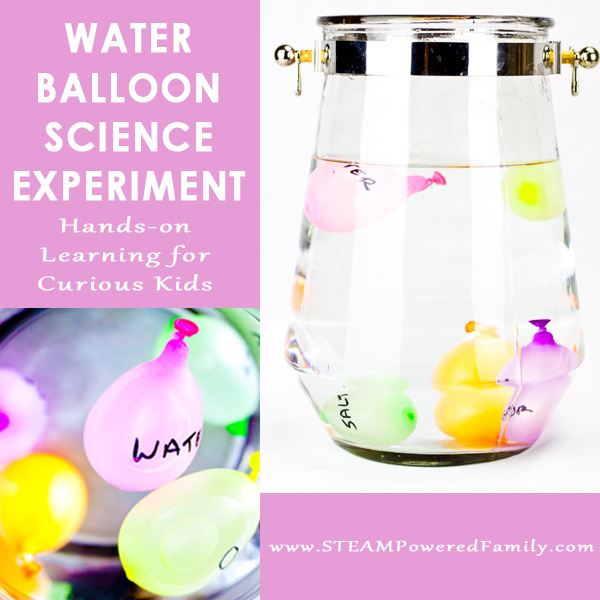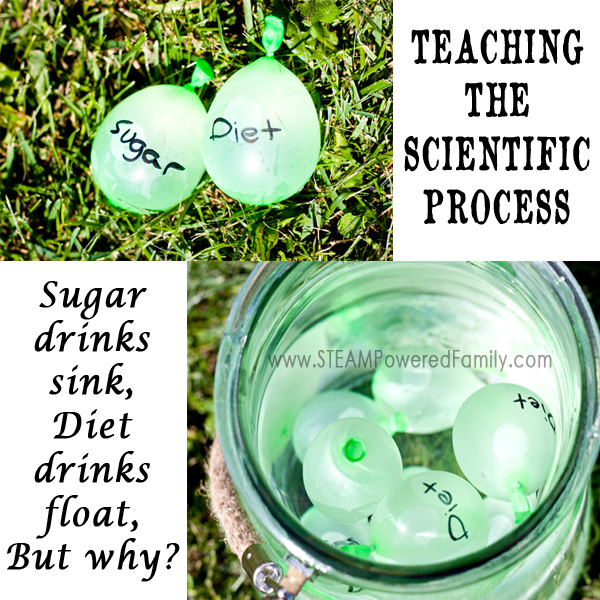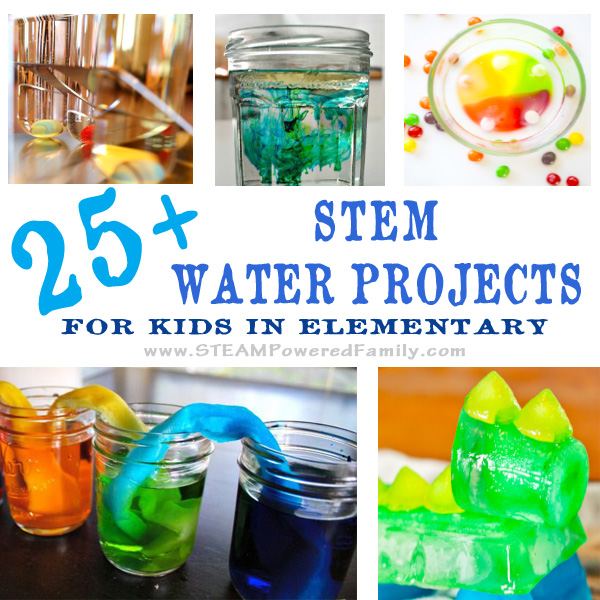Science With Water Balloons
Kids love playing with water. What they also love are water balloons! Today, instead of a water balloon fight, we are using those balloons for science! This water balloon science experiment is a great way to help children explore density and buoyancy, plus it is outrageously fun. This is the perfect summer activity for kids of all ages from preschool, kindergarten, first grade all the way to 6th graders too!
Water Balloon Science Experiment – Buoyancy and Density
My kids have been obsessed with experiments exploring the properties of water lately. In a recent science fair my son did a presentation on “does it float” and played with a variety of different concepts. Since we have already done quite a lot of flotation experiments and water projects for kids, I knew I was going to have to come up with something unique and different to capture their imagination.
Check out one of our earlier experiments that inspired this project, where we tested pop cans to see which ones float.
This water balloon experiment is such a fun summer science project that will not only delight young learners, but teach valuable scientific principles in a memorable, age appropriate way. My kids absolutely loved this balloon science experiment and keep asking to do it again and again. Just be warned, you may get wet!!
Water Balloon Experiment
The concept of this experiment is to explore which liquids float, and which ones sink, by filling water balloons with different liquids. If you don’t want to use balloons, you could use empty plastic bottles, but honestly, balloons are so much more fun!
Buoyancy and Density Water Balloon Science
Supplies
You only need a few really simple supplies for this experiment.
- A large container or bucket filled with water. Look for something with a depth of at least double the size of your water balloons when they are filled. Deeper is even better! If you can find a clear sided container, it will help kids see what is happening with the balloons.
- Water balloons
- 60mL Syringe
- Different liquid solutions (see below for suggestions!)
- Sharpie markers
More Science Experiments with Water
Directions
I highly recommend you do this activity outside. Water balloons are very easy to pop! I also recommend you fill multiple balloons with each type of liquid. That way if one pops you have some back ups. For similar reasons, I suggest you wear something you don’t mind getting wet.
Before you fill each balloon make sure you label it using a Sharpie so they don’t get mixed up. We also found using specific colours for certain liquids was fun.
Water balloons are meant to be filled under pressure. This is where the syringe really helps. It applies plenty of pressure to fill the balloons. We found a 60mL syringe made perfect, egg sized water balloons.
Pro Tip! Make Sure you wash the syringe well after each type of liquid so you don’t cross contaminate.
I suggest putting the liquid in a bowl, then have your kids fill the syringe by pulling back on the plunger, then insert the syringe into a balloon and depress the plunger to fill the balloon.
Here are some ideas for what to put in your balloons:
- lamp oil
- rubbing alcohol
- vegetable oil – One note of caution: We found vegetable oil tended to weaken our water balloons making them more prone to popping. We did not experience this with any other liquid type, only vegetable oil.
- dish soap
- milk
- juice
- maple syrup
- corn syrup
- honey
- salted water
- water with sugar added
- water with artificial sweetner added
Pro Tip! Filling the balloons with a syringe is a fantastic fine motor strengthening activity, but prepare them outside or in an easy to clean up space, as it can get messy. Your water balloon filler is going to have so much fun doing this! The giggles were great!
Once your balloons are filled, head over to your container. This is the perfect time to ask for some predictions. Will it sink or will it float? Then place your balloons in the water and watch what happens.
The Science
Different types of liquids have different densities. In this experiment we are able to see which liquids have a greater density than water causing them to sink, and which ones are less dense than water, which allows them to float.
Science With Water Balloons – Hands-on Learning For Curious Kids
The most exciting part for me was when my son later asked if we could use this concept to test another scientific concept. It lead to some amazing inquiry based learning in a follow up experiment.
Looking for more water inspired learning? Check out this list of over 25 innovative Water Experiments and STEM Projects




